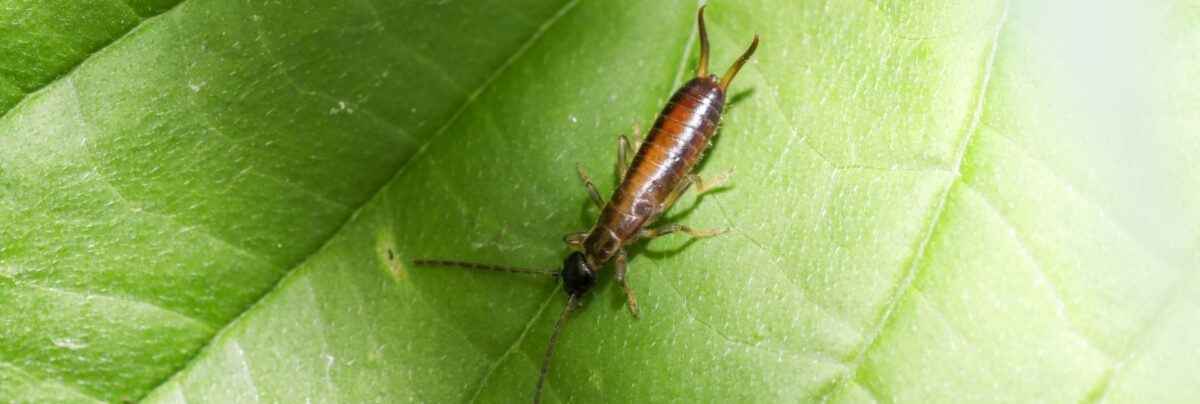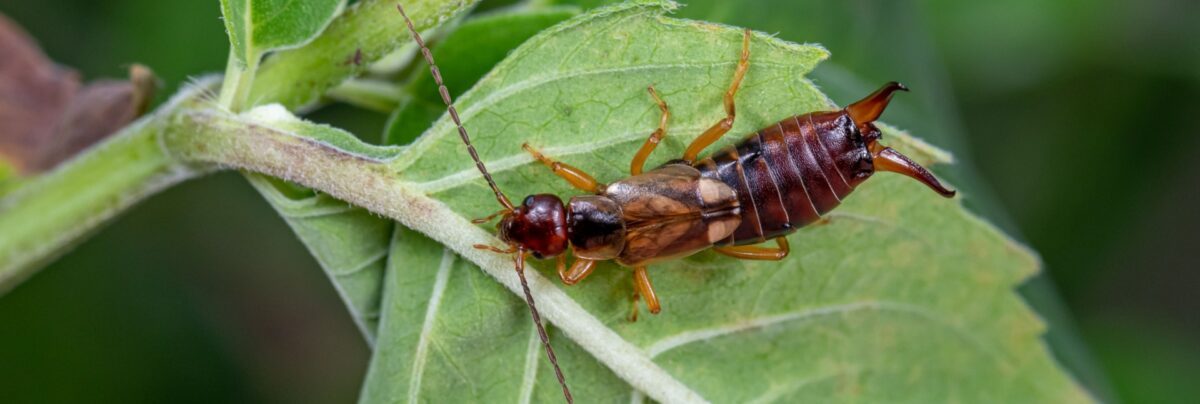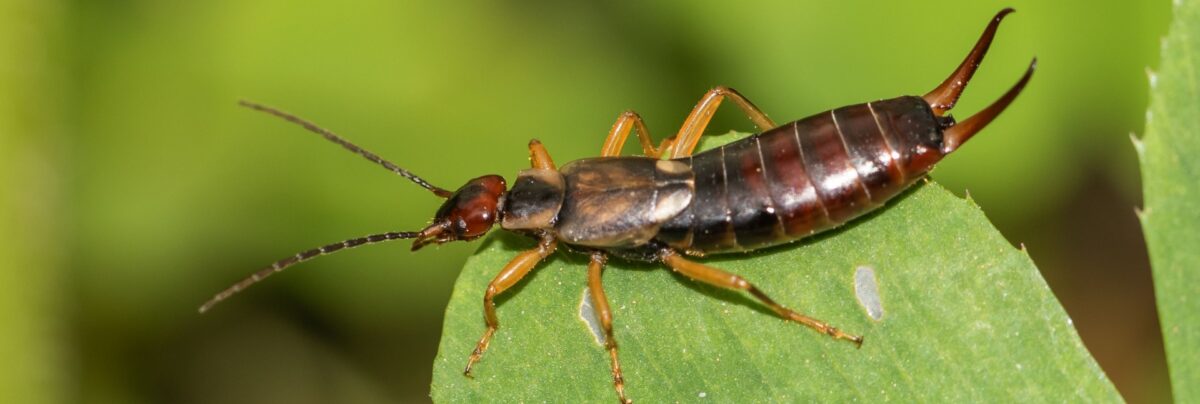Tag: Earwig Prevention

Gardeners in Myrtle Beach know how rewarding it is to cultivate vibrant flowers, fresh vegetables, and lush landscapes. However, these beautiful gardens can sometimes attract unwelcome visitors — including earwigs. These nocturnal insects are common in coastal South Carolina, and without proper care, they can cause damage to your prized plants.
If you’re looking to protect your garden and keep it thriving, understanding earwig prevention is key. By taking proactive steps and knowing when to call in the experts, you can maintain a healthy, pest-free garden environment.
For tailored pest management solutions, Team Veterans Pest Control offers expert services throughout Myrtle Beach, ensuring your garden stays protected from earwigs and other pests.
In this blog, we’ll share practical earwig prevention tips that every Myrtle Beach gardener should know.
Why Are Earwigs a Concern in Myrtle Beach Gardens?
Earwigs thrive in the warm, humid climate of Myrtle Beach. Their love for moisture and shelter means gardens with dense mulch, leafy debris, and shaded areas often become ideal hiding spots. While earwigs also consume decaying organic matter—which can benefit your garden—large populations can feed on tender leaves, flowers, and fruits, causing noticeable damage.
Understanding their behavior helps gardeners implement effective earwig prevention strategies.
Top Earwig Prevention Tips for Myrtle Beach Gardeners
1. Eliminate Excess Moisture
Earwigs depend on moist environments to survive. To reduce their attraction:
- Avoid overwatering your garden; water early in the morning to allow surfaces to dry during the day.
- Fix leaky hoses, irrigation systems, and outdoor faucets.
- Improve drainage in garden beds and around your home to prevent standing water.
- Ensure gutters and downspouts direct water away from your foundation.
Controlling moisture not only reduces earwig populations but also limits other moisture-loving pests.
2. Remove Potential Hiding Spots
Earwigs hide during the day in cool, dark places. Reduce their shelter options by:
- Clearing away garden debris, fallen leaves, and excess mulch, especially near plant bases and home foundations.
- Storing firewood and lumber away from the garden and off the ground.
- Sealing cracks, crevices, and gaps around your home’s exterior to block entry.
Maintaining a clean garden environment disrupts earwig habitats and lowers infestation risks.
3. Practice Regular Garden Maintenance
Routine garden upkeep helps keep earwig numbers down:
- Prune dense shrubs and remove overgrown vegetation to increase sunlight and airflow.
- Turn compost piles regularly to discourage earwig nesting.
- Harvest ripe fruits and vegetables promptly to avoid attracting pests.
A well-maintained garden creates conditions less favorable for earwigs and other pests.
4. Use Physical Traps
Simple traps can help monitor and reduce earwig populations:
- Roll damp newspapers or cardboard and place them in garden beds overnight. Earwigs seek shelter inside; in the morning, dispose of the traps in soapy water.
- Set shallow dishes filled with vegetable oil or soy sauce to attract and trap earwigs.
While traps won’t eliminate infestations, they can significantly reduce numbers and give you early warnings of increased activity.
5. Introduce Natural Predators
Earwigs have several natural enemies that help control their population:
- Birds, toads, frogs, and lizards feed on earwigs.
- Beneficial insects like ground beetles and spiders also prey on them.
Encourage these predators by creating a garden habitat with bird feeders, water sources, and native plants. Avoid broad-spectrum pesticides that kill beneficial insects.
6. Consider Professional Earwig Prevention Services
If earwig problems persist despite your best efforts, professional intervention may be necessary. Team Veterans Pest Control offers expert earwig prevention and control tailored to Myrtle Beach’s environment.
Additional Tips for a Healthy, Pest-Free Garden
- Rotate crops annually to prevent pest buildup in soil.
- Use mulch sparingly and avoid direct contact with plant stems.
- Encourage pollinators by planting flowers like lavender and marigold.
- Regularly inspect your garden for early signs of pest damage.
Combining these practices with professional earwig prevention measures will ensure your Myrtle Beach garden remains vibrant and productive.
Why Trust Team Veterans Pest Control?
As a locally owned and operated pest control company, Team Veterans Pest Control understands the unique pest challenges Myrtle Beach gardeners face. Our team uses the latest techniques and products to provide effective and lasting earwig prevention.
We pride ourselves on customer satisfaction, professionalism, and eco-friendly practices that protect your home, garden, and the local environment.
By choosing Team Veterans Pest Control, you get a reliable partner dedicated to keeping your garden free of earwigs and other pests year-round.

If you’re a gardener or homeowner in South Carolina, you might have noticed small, ragged holes on the leaves of your outdoor plants and shrubs. These unsightly signs of damage could be caused by a common but often overlooked pest: earwigs. While earwigs generally play a beneficial role in gardens by feeding on decaying plant matter and other insects, they can sometimes turn into a nuisance by feeding on live plants.
Knowing how to identify earwig damage early is key to protecting your garden’s health and beauty. This blog will help you recognize the telltale signs of earwig feeding on your plants and shrubs and guide you on how to manage and prevent further damage. For expert assistance, Team Veterans Pest Control is here to provide professional solutions tailored to South Carolina’s unique environment.
What Is Earwig Damage?
Earwigs are small, nocturnal insects easily recognized by the pair of pincers on their rear end. They feed mostly at night, hiding during the day in moist, dark places like mulch, garden debris, or under stones. Their feeding habits can cause distinctive damage to outdoor plants and shrubs.
Earwig damage typically appears as irregular, ragged holes or notches on leaves, petals, and sometimes on young fruits. The damage can affect a wide range of plants, including vegetables, flowers, shrubs, and even some fruits.
Common Signs of Earwig Damage on Plants and Shrubs
1. Ragged or Irregular Holes in Leaves
One of the clearest signs of earwig damage is the presence of jagged, uneven holes on leaves. Unlike the smooth holes caused by some other pests, earwig feeding often looks torn or shredded. These holes may vary in size, depending on the earwig population and plant type.
2. Notched Leaf Edges
In addition to holes, earwigs frequently chew on the edges of leaves, leaving notched or scalloped margins. This damage can sometimes be mistaken for mechanical injury, but consistent notching on multiple leaves is a strong indicator of earwig activity.
3. Damage to Flowers and Petals
Earwigs also feed on tender flower petals, causing ragged edges or holes in blooms. This can reduce the aesthetic appeal of flowering plants, especially those prized for their blossoms.
4. Chewed Fruits and Vegetables
In vegetable gardens, earwigs may feed on young fruits such as strawberries or beans, leaving small holes or surface scarring. This damage can encourage rot or disease, leading to further crop loss.
5. Presence of Earwigs
While spotting the damage is important, seeing the pests themselves can confirm the problem. Earwigs are mostly active at night and can often be found hiding in moist mulch, under pots, or in plant debris during the day.
Why Is Earwig Damage a Concern?
While earwigs provide some benefits by consuming decaying organic matter and other small insects, high populations can quickly lead to extensive earwig damage. This feeding can stress plants, reduce photosynthesis by damaging leaves, and diminish the overall health and appearance of your garden.
In vegetable gardens, the damage caused by earwigs can directly affect crop yields and quality. Ornamental plants and shrubs can also suffer, impacting your landscaping’s beauty and value.
How to Manage and Prevent Earwig Damage
If you notice signs of earwig damage, it’s important to take steps to manage their population and prevent further harm to your plants. Here are some effective strategies:
1. Remove Hiding Places
Earwigs prefer moist, dark environments. Clearing away excess mulch, leaf litter, and garden debris can reduce their daytime hiding spots. Keep the garden tidy and remove objects like stones or wood piles near your plants.
2. Reduce Moisture Levels
Since earwigs thrive in damp conditions, addressing overwatering or poor drainage can make your garden less hospitable to them. Water early in the day to allow surfaces to dry and avoid excessive irrigation.
3. Use Physical Traps
You can trap earwigs by placing rolled-up damp newspapers or cardboard strips in your garden at night. Check these traps in the morning and dispose of the earwigs by dropping them into soapy water.
4. Encourage Natural Predators
Birds, frogs, toads, and beneficial insects such as ground beetles feed on earwigs. Creating a garden habitat that supports these natural predators helps maintain a healthy balance and controls earwig populations.
5. Consider Professional Pest Control
If earwig damage becomes severe or persistent, professional help may be needed. Team Veterans Pest Control specializes in pest management for South Carolina gardens and landscapes. Our experts can assess the situation and apply targeted, environmentally responsible treatments to control earwigs and protect your plants.
Why Choose Team Veterans Pest Control?
With extensive experience serving South Carolina homeowners, Team Veterans Pest Control understands the local pest challenges. Our skilled technicians use proven techniques and safe products to manage earwigs and other common garden pests effectively. We offer personalized service plans that include thorough inspections, treatment, and ongoing monitoring to keep your outdoor spaces healthy and beautiful year-round.

If you’ve spent any time tending to a garden in Charleston, South Carolina, you may have noticed a curious insect scurrying about, especially after a rain. These insects, known as earwigs, are common visitors in many Charleston gardens and yards. Understanding earwig behavior can help gardeners and homeowners know when to be concerned and how to manage these insects effectively.
For expert advice on managing pests like earwigs in Charleston, trust the professionals at Team Veterans Pest Control; we offer reliable and environmentally responsible pest control services tailored to the local environment.
In this blog, we’ll dive into what makes earwigs so prevalent in Charleston gardens, explain their unique behavior, and discuss when and how to address potential infestations.
What Are Earwigs?
Earwigs are small, elongated insects characterized by pincers, or forceps, on their rear end. Despite some myths, earwigs do not crawl into human ears. They are mostly nocturnal and prefer dark, moist environments where they can hide during the day.
Earwigs feed on a variety of organic matter, including decaying plant material, fungi, and sometimes live plants. This diverse diet means their impact on gardens can be mixed—they may help by consuming dead material but can also damage flowers, fruits, and vegetables when populations are high.
Why Are Earwigs Common in Charleston Gardens?
One of the main reasons earwigs thrive in Charleston gardens is the region’s warm, humid climate. Charleston’s subtropical weather provides an ideal environment for earwig survival and reproduction. The consistent moisture from rain and humidity creates plenty of damp hiding spots, which earwigs prefer.
Gardens rich in organic mulch, dense shrubs, and shaded areas are especially attractive to earwigs because they provide protection from predators and harsh weather. Additionally, Charleston’s gardens often have abundant plant material that serves as a food source.
The local climate also influences earwig behavior, with earwigs being more active and noticeable during the warmer months when they seek food and mates.
Understanding Earwig Behavior
Nocturnal and Moisture-Loving
Earwigs are primarily active at night, coming out under the cover of darkness to forage for food. During the day, they hide in cool, damp places such as under rocks, leaf litter, garden mulch, and even inside cracks around foundations.
Their preference for moisture explains why they are frequently spotted after rain or in irrigated garden beds. Reducing excess moisture can help limit their population.
Omnivorous Diet and Feeding Habits
Earwig behavior includes feeding on a variety of materials. They consume decaying leaves, fungi, and small insects but can also nibble on soft plant tissues such as flowers, fruits, and vegetables. When earwig populations are low, their feeding can actually benefit gardens by helping decompose organic matter and preying on harmful insects.
However, when populations surge, earwigs can cause noticeable damage to tender plants. This damage often appears as irregular holes or ragged edges on leaves and petals.
Reproductive Behavior and Lifecycle
Earwigs reproduce rapidly in warm climates like Charleston’s. Females lay eggs in moist soil or hidden crevices and guard their young until they hatch. This protective maternal behavior ensures high survival rates for nymphs, contributing to population booms in favorable conditions.
The lifecycle from egg to adult can be as short as a few weeks, allowing multiple generations each year, which can intensify garden infestations.
When Should You Be Concerned About Earwigs?
In small numbers, earwigs usually do not cause significant garden problems and can even be beneficial. However, large populations can lead to considerable plant damage, especially to vegetables like lettuce, strawberries, and beans, or ornamental plants like dahlias and chrysanthemums.
If you notice chewed leaves, damaged flowers, or small holes in fruits, earwigs might be the culprits. These signs, along with visible earwig sightings, indicate that intervention may be needed.
How to Manage Earwigs in Charleston Gardens
Effective management of earwigs involves a combination of cultural practices and, when necessary, professional pest control.
Reduce Moisture and Shelter
Since earwig behavior depends heavily on moisture and shelter, removing excess moisture and hiding places around your garden can reduce their numbers. Avoid overwatering, clear away piles of leaves or mulch near the foundation, and seal cracks in your home’s exterior to limit entry points.
Natural Predators and Beneficial Insects
Encouraging natural predators like birds, toads, and beneficial insects can help control earwig populations. Creating a balanced garden ecosystem is a sustainable way to keep earwigs in check.
Traps and Barriers
Simple traps such as rolled-up newspapers or damp cardboard placed in the garden overnight can capture earwigs, which can then be disposed of in the morning. Physical barriers like sticky tape or copper mesh around plant bases may also deter earwig access.
Professional Pest Control Services
If earwig populations become overwhelming or if you’re unsure how to manage them safely and effectively, contacting Team Veterans Pest Control is the best choice. Our experienced technicians understand earwig behavior and the unique challenges of Charleston’s climate. We provide customized, environmentally sensitive treatments to protect your garden and home from earwigs and other pests.
Why Choose Team Veterans Pest Control?
With years of experience in Charleston, Team Veterans Pest Control offers reliable pest control services tailored to the region’s environment. Our team uses the latest methods and eco-friendly products to address pest problems while minimizing impact on beneficial insects and the surrounding ecosystem.
Whether you’re dealing with earwigs, termites, or other common Charleston pests, you can trust Team Veterans Pest Control for expert advice and effective solutions.